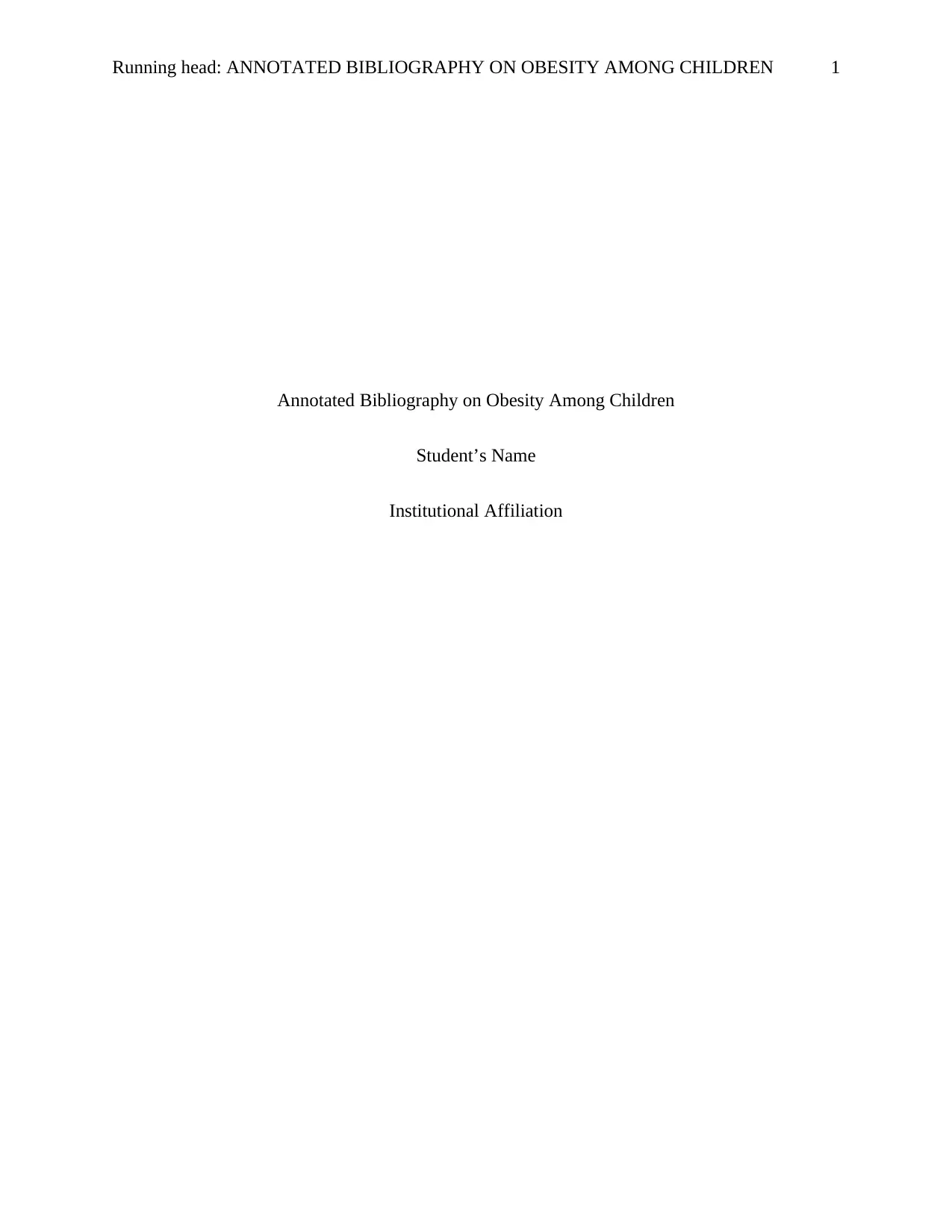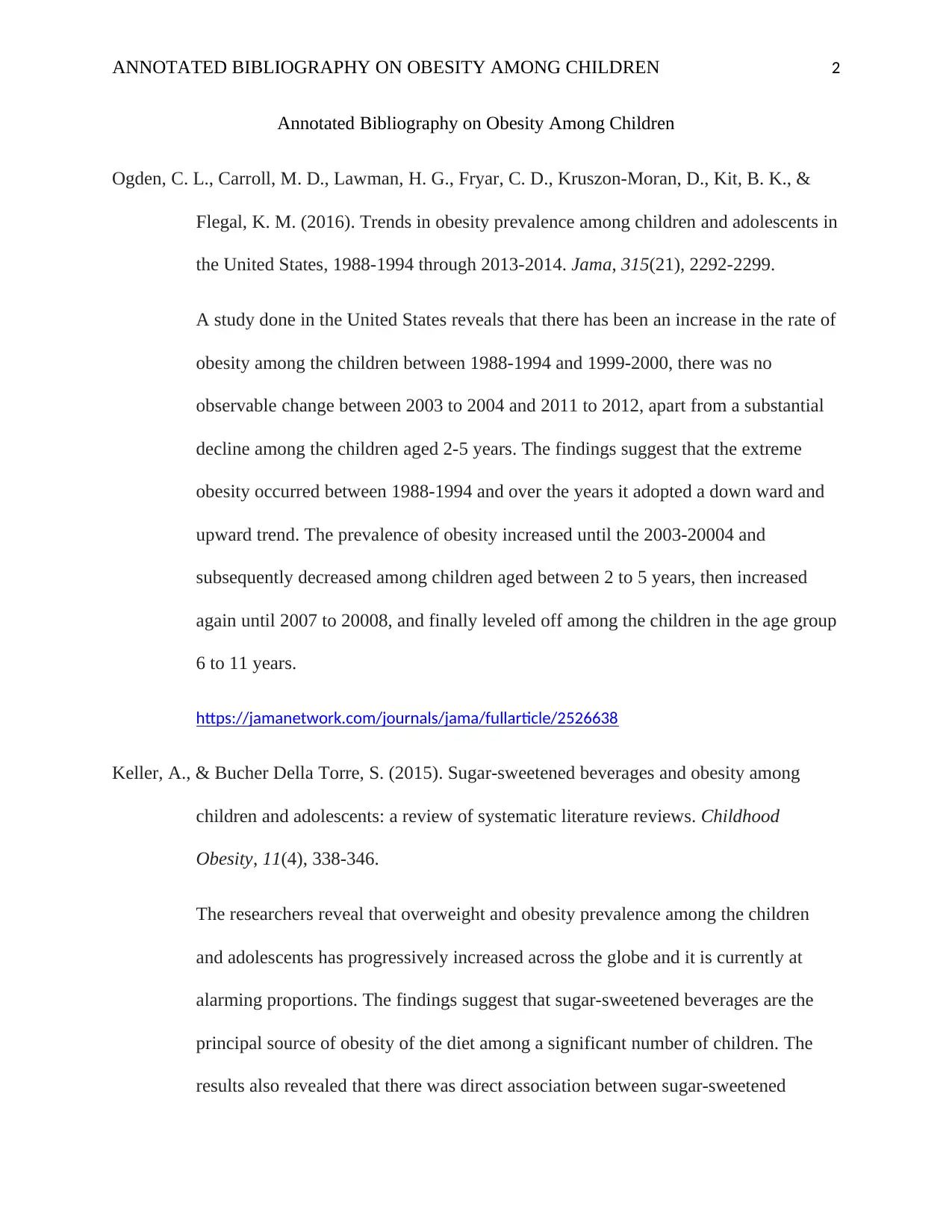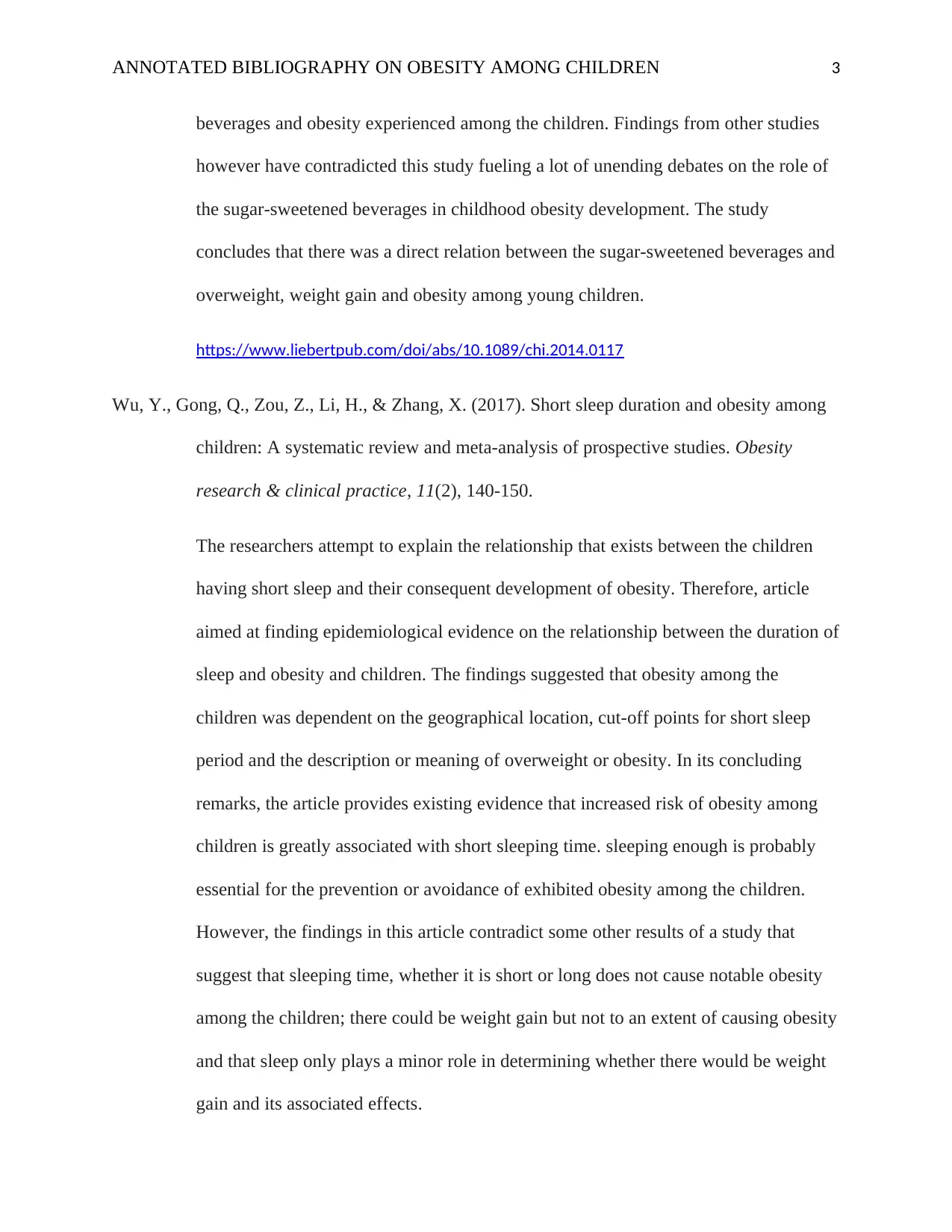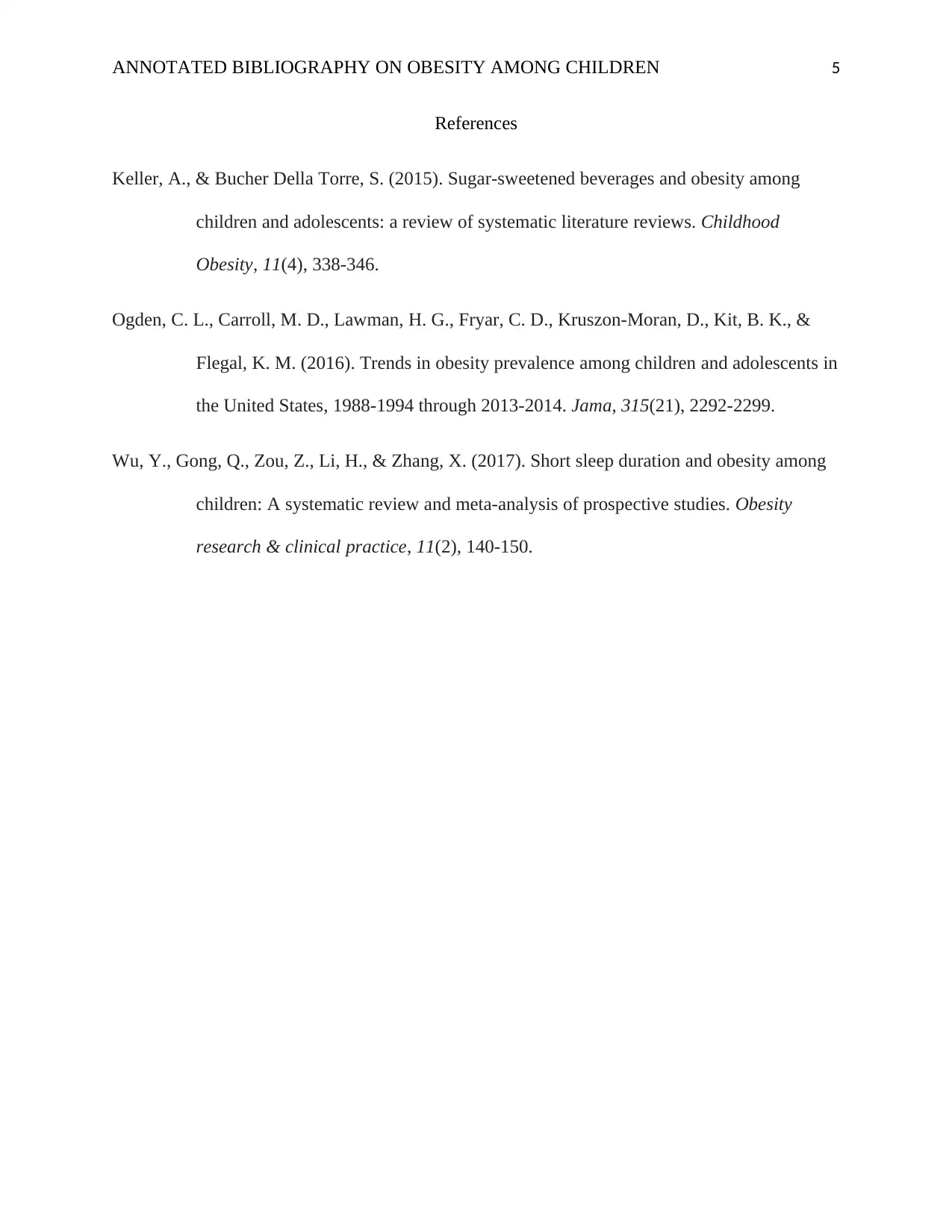Annotated Bibliography on Childhood Obesity: A Comprehensive Review
VerifiedAdded on 2022/11/29
|5
|787
|364
Annotated Bibliography
AI Summary
This annotated bibliography explores the complex issue of childhood obesity through the analysis of three key research articles. The first study, by Ogden et al. (2016), examines trends in obesity prevalence among children and adolescents in the United States from 1988 to 2014, highlighting fluctuations and specific age group impacts. The second article, by Keller & Bucher Della Torre (2015), reviews systematic literature reviews on the relationship between sugar-sweetened beverages and obesity, emphasizing the potential link between these beverages and weight gain in children, while acknowledging contradictory findings. The final study, by Wu et al. (2017), investigates the correlation between short sleep duration and obesity in children through a meta-analysis of prospective studies, suggesting an increased risk of obesity with insufficient sleep, although the authors also acknowledge contradictory findings. Each entry includes a summary of the study's methodology, findings, and conclusions, providing a critical overview of the current research landscape and relevant context for understanding the multifaceted nature of childhood obesity.
1 out of 5











![[object Object]](/_next/static/media/star-bottom.7253800d.svg)